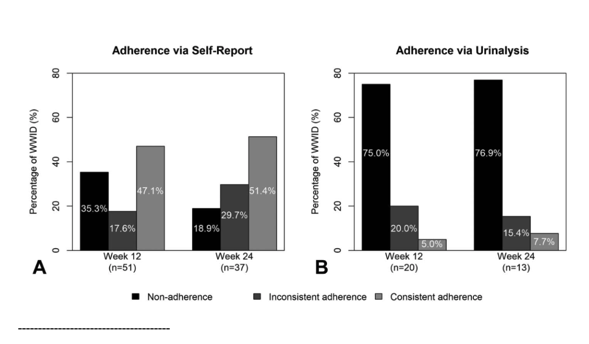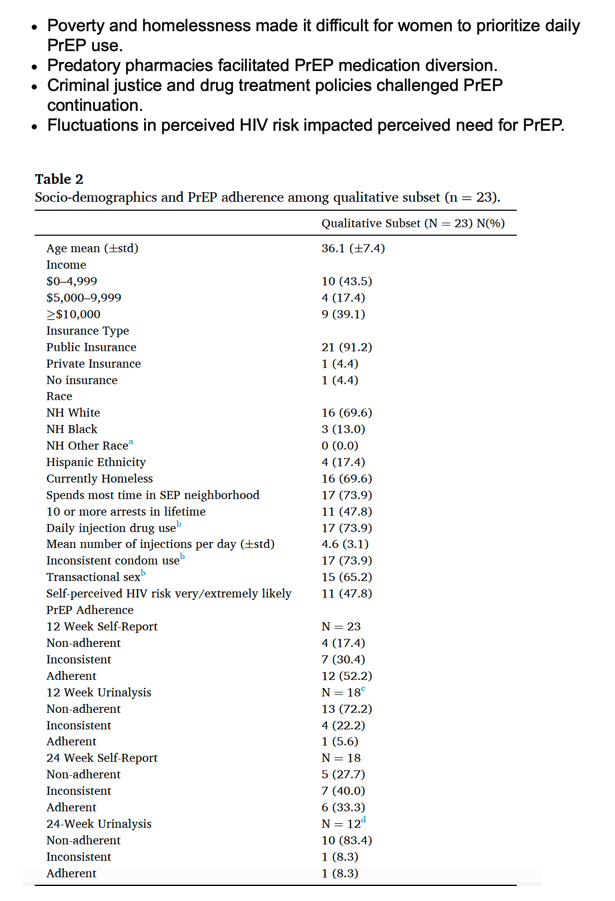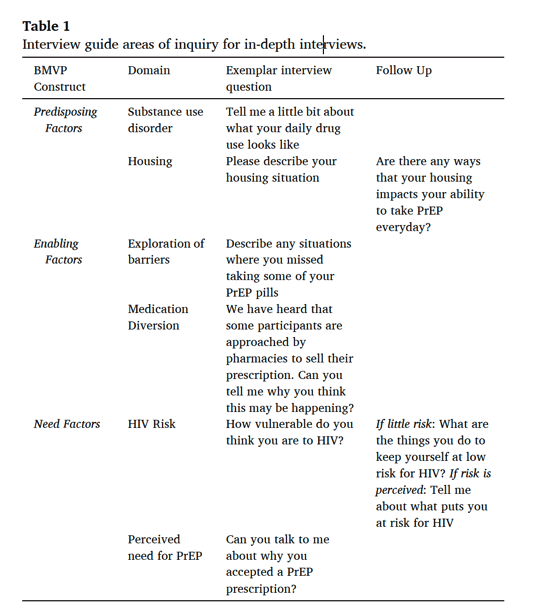| |
2 Studies on PrEP for Women IDUs, Demonstrate
PrEP is a Necessary Tool for Women, to EtE
|
| |
| |
Download the PDF here
Download the PDF here
Download the PDF here
Targeted Support Services Are Critical. Unless HIV is prevented in this group of people New HIV Cases will remain a problem & Addressing this Community is Necessary to' End The Epidemic'
And a 3rd pdf report is also attached:
"An Exploration of Pre-exposure Prophylaxis (PrEP) Initiation Among Women Who Inject Drugs"
While PrEP was considered beneficial because of its effectiveness and ability to be user-controlled, participants described barriers to initiation. For 7/25 of the sample, perceived barriers outweighed the benefits of PrEP and sense of HIV threat. These women declined PrEP. Key barriers included: potential adverse reactions with comorbid conditions, PrEP- and HIV-related stigma, location of care, and the psychological costs of initiating new relationships with PrEP care providers.
---------------------------------
and now LA cabotegravir is being studied that incudes use of the DOVE device which can identify an overdose & deliver naltrexone.
Women and PrEP: TIARAS Program and HIV Prevention, Syringe Exchange Program
Study of LA PrEP at Syringe Exchange program in Philadelphia
PrEP Clinic at Philadelphia Prevention Point
Wearable DOVE Device: A device that senses a severe opioid overdose and reverses the overdose with naloxone without the need for a bystander.
DOVE: Noninvasive Shoulder-based Opioid Overdose Detection Device
DOVE: A Wearable Device to Prevent Opioid Overdose Deaths
---------------------------------------------------------
These studies demonstrate the need to offer trauma-informed care for WWID: "Together, our findings challenge the idea that daily PrEP is not a viable HIV prevention tool for PWID. Rather, we demonstrate that SSP are promising locations to reach WWID who would benefit from and are interested in receiving PrEP in this setting". These studies reflect the culture among PWH, with Black men & women needing better more intense care & services, and of note these patient populations are disproportionately affected by aging & HIV, they experience higher rates & more premature onset for comorbidties.
Below are 2 studies (3 reports, pdfs attached) that took place at Philadelphia Prevention Point Syringe Exchange Program. First they studied TDF-based PrEP (SHE Demonstration Project) where adherence was a big barrier - Our data demonstrate that WWID accessing SSP are at exceptionally high risk of HIV infection, We also documented high rates of STI - About half of the sample self-reported taking all their medication at weeks 12 and 24 (Fig. 2A); this was not confirmed by urinalysis (Fig. 2B). Only 1 participant had prevention effective tenofovir levels (>1000 ng/mL) detected at weeks 12 and 24, although a sizeable proportion (15%–20%) had 10–1000 ng/mL of tenofovir detected, which is consistent with some level of adherence within the past week.
the 1st study:
"Integrating HIV Preexposure Prophylaxis With Community-Based Syringe Services for Women Who Inject
Drugs: Results From the Project SHE Demonstration Study" pdf attached
Our data suggest that women are interested in and willing to initiate PrEP. They also demonstrate the need to offer trauma-informed care for WWID and highlight the important role of SSP in providing post assault care to women.
This first US-based demonstration project with WWID provides some key insight for programs and has implications for the delivery of longer acting formulations when they become commercially available. The emergence of HIV outbreaks during an unprecedented scourge of opioid-related overdose deaths in the United States signals the need to aggressively scale-up evidenced-based interventions to prevent HIV to curb infections, including PrEP, among PWID.
We recruited 136 WWID. Of those, 95 were included in the final sample, and 63 accepted a PrEP prescription at week 1. Of these 95, 42 (44.2%) were retained at week 24. Baseline STI prevalence was 17.9%; there were 2 HIV seroconversions and 1 pregnancy.
Safety/tolerability issues were uncommon, and acceptability/satisfaction was high.
Engagement in later stages of the PrEP care continuum was more common than expected given the multitude of destabilizing factors reported by the participants (eg, high frequency drug use, homelessness, low income) known to decrease health care utilization. Despite these challenges, most women attended their visit scheduled at week 1, although this dropped by more than half over the study follow-up period. Retention in the pilot project was comparable (ie, men who have sex with men in the United States) 37 or higher than those reported in numerous PrEP projects with women in sub-Saharan Africa. 29,30 We speculate that retention in care in our study was driven in part by streamlining PrEP programming into known and needed services (eg, SSP)

--------------------------------------
The 2nd study reported below:
"PrEP just isn't my priority": Adherence challenges among women who inject drugs participating in a pre-exposure prophylaxis (PrEP) demonstration project in Philadelphia, PA USA - pdf attached
WWID have been underrepresented in all phases of PrEP research. This has led to nominal PrEP uptake among WWID
Gendered power inequalities make women who inject drugs (WWID) more vulnerable to HIV than male counterparts.
Within romantic partnerships, syringe-sharing and condom-use are often perceived as acts of intimacy that demonstrate trust. As a result, women face difficulties negotiating their use within romantic partnerships. WWID also face grave economic insecurity fueled by stigma towards PWID and challenges finding formal employment given the need to inject multiple times daily. Engagement in commercial sex, a common form of income generation among WWID , is associated with increased risk of traumatic exposures from paying partners, including sexual assault , as well as limited agency to negotiate condom-use . Taken together, WWID's social and economic marginalization greatly reduces women's autonomy over their HIV risk reduction, highlighting the need for discrete, user-driven HIV prevention options.


|
|
| |
| |
|
|
|